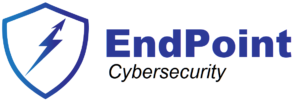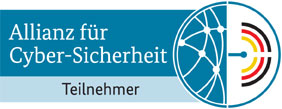Understanding ISO 27001:2022 Annex A.14 – System Acquisition, Development, and Maintenance
We started the ISO 27001:2022 series with the promise of explaining how the 14 categories of controls can be implemented.
Today we address ISO 27001:2022 Annex A.14, “System Acquisition, Development, and Maintenance”, which addresses the importance of ensuring the security of information systems throughout their lifecycle, from acquisition and development to maintenance and disposal. This annex provides guidelines for implementing controls to manage the security of information systems and software applications.
Importance of System Acquisition, Development, and Maintenance
System acquisition, development, and maintenance are critical stages in the lifecycle of information systems and software applications. Annex A.14 underscores this importance by:
- Security by Design: Integrating security considerations into the acquisition, development, and maintenance processes helps identify and mitigate security risks early in the lifecycle, reducing the likelihood of vulnerabilities and security incidents.
- Secure Development Practices: Implementing secure coding practices, testing methodologies, and vulnerability management processes helps ensure the integrity, confidentiality, and availability of software applications and systems.
- Change Management: Managing changes to information systems and software in a controlled manner helps prevent unauthorized modifications, configuration errors, and disruptions to services.
Implementing Annex A.14 in Practice
To effectively implement Annex A.14, organizations can follow these practical steps:
- Security Requirements Analysis: Conduct a security requirements analysis during the system acquisition phase to identify security requirements and considerations for information systems and software applications.
Example: Include security requirements such as authentication mechanisms, access controls, encryption, and audit logging in the procurement specifications for new information systems or software applications.
- Secure Development Practices: Adopt secure coding guidelines, frameworks, and best practices during the development phase to minimize the risk of security vulnerabilities and weaknesses in software applications.
Example: Implement input validation, output encoding, and proper error handling to mitigate common vulnerabilities such as cross-site scripting (XSS), SQL injection, and buffer overflows in web applications.
- Vulnerability Management: Implement vulnerability scanning, penetration testing, and code reviews to identify and remediate security vulnerabilities and weaknesses in information systems and software applications.
Example: Conduct regular vulnerability scans and penetration tests of network infrastructure, web applications, and databases to identify security vulnerabilities and prioritize remediation efforts.
- Change Control: Establish change management procedures to control and document changes to information systems and software applications in a controlled and auditable manner.
Example: Implement a change management system to track and manage changes to software code, configurations, and configurations, ensuring that changes are reviewed, approved, and tested before deployment.
- Patch Management: Implement patch management processes to identify, assess, and apply security patches and updates to information systems and software applications in a timely manner.
Example: Establish a patch management schedule to regularly assess and apply security patches and updates to operating systems, software applications, and firmware to mitigate security vulnerabilities and risks.
Audit of Compliance with Annex A.14
Auditing compliance with Annex A.14 is essential for evaluating an organization’s adherence to system acquisition, development, and maintenance requirements. Here’s how the audit process typically unfolds:
- Audit Preparation: Gather documentation related to system acquisition, development, and maintenance policies, procedures, and controls. Appoint an audit team to facilitate the audit process.
- Audit Planning: Define the audit scope, objectives, and criteria. Develop an audit plan outlining activities, timelines, and responsibilities of auditors and auditees.
- On-site Audit: Conduct on-site visits to assess implementation of system acquisition, development, and maintenance controls. Review documentation, inspect development environments, and observe change management practices. Use checklists or assessment tools to evaluate compliance.
- Audit Findings: Analyze findings and identify areas of non-compliance or improvement opportunities. Document observations, including strengths and weaknesses in system acquisition, development, and maintenance implementation.
- Reporting: Prepare an audit report summarizing findings, conclusions, and recommendations for corrective actions. Share with senior management and stakeholders for review and action.
- Follow-up: Address audit findings by implementing corrective actions and improvements as recommended. Conduct follow-up audits to verify effectiveness of corrective measures and ensure ongoing compliance.
Conclusion
ISO 27001:2022 Annex A.14 emphasizes the importance of ensuring the security of information systems throughout their lifecycle. By implementing controls and best practices for system acquisition, development, and maintenance, organizations can minimize security risks, vulnerabilities, and incidents. Regular audits help assess compliance with Annex A.14 requirements and drive continuous improvement in system security practices.
The post Understanding ISO 27001:2022 Annex A.14 – System Acquisition, Development, and Maintenance first appeared on Sorin Mustaca on Cybersecurity.
© Copyright 2024 Endpoint Cybersecurity GmbH, All rights Reserved.



